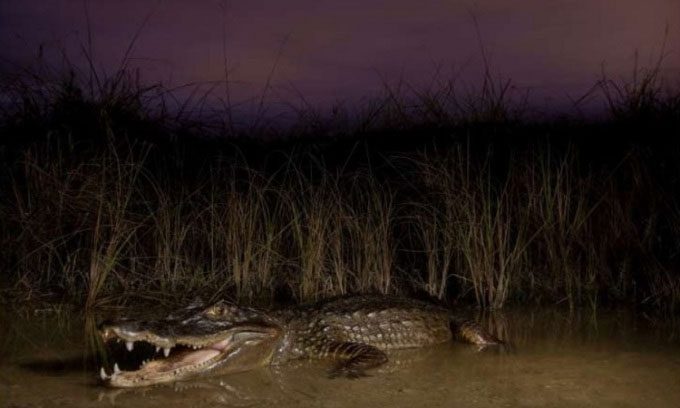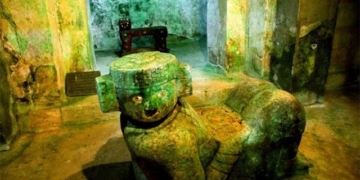Researchers Collaborate with Florida Authorities to Eradicate Invasive Spectacled Caiman.
Spectacled caiman, a native species from Central and South America, has been residing in Florida since the 1970s. They have invaded the Everglades region of Florida through the pet trade, farming, escape from captivity, or being released into the wild. This species poses a threat to local wildlife sharing the same habitat, such as the American alligator and the common caiman, by competing for food and other resources. Additionally, they prey on birds, small mammals, fish, and various reptiles.

An adult spectacled caiman in the Biscayne Bay wetlands. (Photo: Nick Scobel).
In a recent study by the University of Florida, published in the journal Management of Biological Invasions, biologists from the Institute of Food and Agricultural Sciences (IFAS) describe a series of measures that successfully control and eliminate spectacled caiman in specific areas of the Everglades. The research team is led by Sidney Godfrey, a wildlife biologist at the Fort Lauderdale Research and Education Center (UF/IFAS FLREC).
The scientists assess that efforts to eradicate the caiman mark a significant milestone in combating invasive species. The measures implemented can be scaled up for various other invasive species across the state and even globally. Invasive spectacled caiman also impact the conservation goals of the Comprehensive Everglades Restoration Plan (CERP). With a budget of over $24.5 million, CERP is the largest ecosystem restoration project ever undertaken in the United States, aimed at rehabilitating, conserving, and protecting the South Florida ecosystem while addressing other needs in the region. Spectacled caiman prey on wildlife and compete with native alligator species. The UF/IFAS team aims to eliminate these caiman in the CERP project to mitigate their impact.
In the study, scientists compiled ten years of data from 2012 to 2021. Measures to address the caiman included weekly surveys, rapid response when individual caiman needed relocation, and conducting examinations. The UF/IFAS team began surveying and culling caiman from the coastal wetlands of Biscayne Bay in December 2012. They also surveyed habitat areas where caiman might hide and be overlooked along their search routes to remove as many caiman as possible.
Team members analyzed data collected along 11 search routes within and adjacent to Florida’s CERP projects, including the coastal wetlands of Biscayne Bay, the C-111 canal, and various critical routes within the water management infrastructure in South Florida. They relocated 251 caiman over the ten-year period. The rate of caiman removal increased from 5 in 2012 to 47 in 2020. The research team learned more about the nesting and egg-laying process of caiman through examinations, which helped increase their removal success.
The next steps in the team’s project include developing new tools such as thermal imaging cameras to locate caiman nests. They also plan to publish dietary habits and genetic information about caiman to raise community awareness of their impacts on the ecosystem.


















































